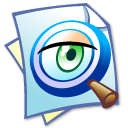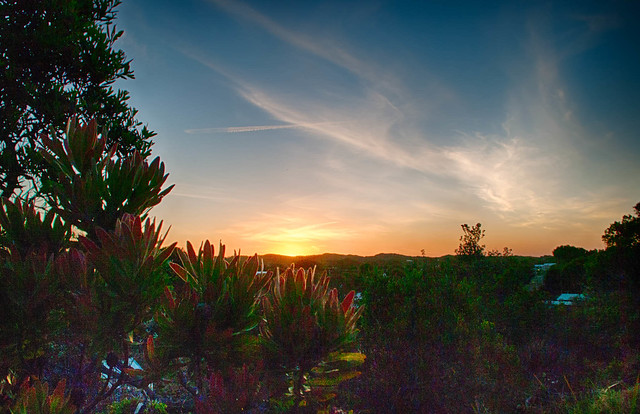 I’ve happened upon on a couple of simple tools to really help you see the important aspects of tonal balance and composition. This approach is specifically for the analysis your existing photos, but the insight gained from using them to prepare some composition sketches is very enlightening and of majour benefit for your future photography. There may be some one click filters that undertake similar methods, but it is the act of doing these steps yourself that will not only improve your observational skills but with make looking for tonal balance an automatic habit.
I’ve happened upon on a couple of simple tools to really help you see the important aspects of tonal balance and composition. This approach is specifically for the analysis your existing photos, but the insight gained from using them to prepare some composition sketches is very enlightening and of majour benefit for your future photography. There may be some one click filters that undertake similar methods, but it is the act of doing these steps yourself that will not only improve your observational skills but with make looking for tonal balance an automatic habit.
The first step is too find a software tool, a simple photo editor, that will allow you to do the basic editing like lightening, darkening, [cropping]. It should also let you make a black and white version and possibly posterized versions. It is important that it can display the photo full screen (or as close to full screen as possible). In this case I am using Paint.net, which is a great little user supported editor. Once you understand what’s going on the process, I suggest you migrate to a non-destructive editor. I played around in Luminar & Polarr , they are also easy to use and do the job required beautifully. Picasa, if you still have a copy, is also perfect and with the added advantage of scrolling through your collection and also rating the photos you like. Lightroom or AfterShot pro could even be used here, if you are already familiar with them (don’t get them just to do these steps, eperiment with something free to start).

Load up a photo you the are interested in analysing, I’m using the Day 5 photo from last week a Foggy Afternoon in Olinda. The next step is to make it black and white. I prefer to just remove all saturation, but any convert to black and white approach is fine. The next step is to have close your eyes and look for the shapes in just 5 tones. You can lighten or darken the image to get the balance better. Only use the contrast if you must. Controls that let you adjust the highlights or shadows independently are preferable to just altering overall contrast. Now display that image full screen. Only save this version if you want to and be careful to give it a different name if you are not using a non-destructive editor.
The second tool is a neat little sketching program, called mischief, which allows you to draw over the photo, as if on a light table. There are several expensive graphics programs that allow you do something similar to this via layers but they are complex to use and set up. Mischief by comparison is really intuitive to use, infinitely scalable and is no more complex than putting a piece of tracing paper over your photo and grabbing a pencil. So I strongly recommend you try these steps with it. Looking on the mischief web site you will see a free and a paid version, you only need the free version to follow my method. Mischief starts full screen and there are a few controls you need to become familiar with so I have already made an Anatomy of Mischief post back a bit in the blog. Next change the window background opacity (you can use the Ctrl+W keyboard shortcut or the toolbar). I find it helpful to make a little Notan legend of 4 greyscales tones somewhere on the edge. You can later use the eye dropper to pick these shades later as you work on your “tracing”. Using the marker brush (its the bottom brush in the free version brush palette) and make it fairly thick and 100% on the opacity slider. Now start colouring over all parts of you photo that have the same tone. This is a lot easier than you might think. If you paint over something and you can not really see where you painted you have got it right. If you can clearly see where you have made brush marks, its time to back off, erase those marks, or use the undo tool (CrtlZ) Think of yourself as doodling in the shades. It doesn’t have to be perfect it is about training your hand eye coordination to almost do it in autopilot. Turning off and on the background transparency now and again lets you check your progress. You should avoid getting too detail but you need to cover the main tonal regions (and arrive at something like the sketch on the right.
Mischief starts full screen and there are a few controls you need to become familiar with so I have already made an Anatomy of Mischief post back a bit in the blog. Next change the window background opacity (you can use the Ctrl+W keyboard shortcut or the toolbar). I find it helpful to make a little Notan legend of 4 greyscales tones somewhere on the edge. You can later use the eye dropper to pick these shades later as you work on your “tracing”. Using the marker brush (its the bottom brush in the free version brush palette) and make it fairly thick and 100% on the opacity slider. Now start colouring over all parts of you photo that have the same tone. This is a lot easier than you might think. If you paint over something and you can not really see where you painted you have got it right. If you can clearly see where you have made brush marks, its time to back off, erase those marks, or use the undo tool (CrtlZ) Think of yourself as doodling in the shades. It doesn’t have to be perfect it is about training your hand eye coordination to almost do it in autopilot. Turning off and on the background transparency now and again lets you check your progress. You should avoid getting too detail but you need to cover the main tonal regions (and arrive at something like the sketch on the right.
Now is the time for the most interesting steps. First look for the main positive and/or negative shapes (pick a colour to outline them and outline simple geometric shapes). In this case the subjects (the positive shapes, my dotted light blue outlines) are the dark shadowy trees and the negative space is the central column of light. The four dark positive shapes are a little asymmetrically balanced either side of that. This is a great start.
In this case the subjects (the positive shapes, my dotted light blue outlines) are the dark shadowy trees and the negative space is the central column of light. The four dark positive shapes are a little asymmetrically balanced either side of that. This is a great start.
Next look for the high contrast edges (and lines). A viewers eyes will involuntarily flow along these high contrast paths paths, because that's what our vision does and our brains use this information to make sense of the image. The direction of the eye will usually be from less contrast towards more contrast along these edges/lines. Also the eye & brain love to play the lost and found found game (lost and found lines and edges is one of a painters secret tools). It is best if these paths can converge on a “sweat spot” or lead onto another path. It is very important that they don’t lead the viewer off the edge of the photo, particular at the corners of the image. If that happens you risk the viewer moving on, scrolling down or turning the page.
Study your tonal doodles and compositional squiggles with squinted eyes. Then close your eye for about 30 seconds and half open them again but follow a different path or focus on an alternate center of interest. Close and half open your eyes a few times until you are following the same paths to the same sweat spots.
Are these what you wanted to show when you took your photo?
You really don’t have to save any of this activity. Its more important that you do it, Doing it as if sketching develops your skill to accurately observe tone and understand composition at an innate level as opposed to following sets of rules. You will be starting to see with an artists eye.
If you have been using a non destructive editor, bring up the colour saturation again (close to the normal mid slider setting) leaving your tonal adjustments. You will probably be amazed, the photo is likely to look less washed out and the colours look more natural (closer to what you remembered when you took the photo).


 mention getting some photos of sunrise and sunsets. In other words I was doing a lot and when back on the cruise vessel I was pretty much eating or sleeping which left precious little time to review and cull photos.
mention getting some photos of sunrise and sunsets. In other words I was doing a lot and when back on the cruise vessel I was pretty much eating or sleeping which left precious little time to review and cull photos.
 I was also very keen to get the GPS tagging running but ran into a series if unexpected issues. The synchronization of timing sounds simple but because the phones had no mobile signal they kept defaulting to different time zones (not “ship” time) and the camera let me change times (both have dual cloaks) but they too often just reset themselves to the base, my home, time. So figuring out time shift was a confusing and annoyingly repeated problem. A second contributing issue was the tools I had at my disposal to show the photos on a map (ie Photo mechanic, Picasa, lightroom and google earth all require and on-line connection) This meant even when I did merge the wayfiles and photos I could not check the location on a map. Recognizing this could lead to a lot of frustration I just gave up.
I was also very keen to get the GPS tagging running but ran into a series if unexpected issues. The synchronization of timing sounds simple but because the phones had no mobile signal they kept defaulting to different time zones (not “ship” time) and the camera let me change times (both have dual cloaks) but they too often just reset themselves to the base, my home, time. So figuring out time shift was a confusing and annoyingly repeated problem. A second contributing issue was the tools I had at my disposal to show the photos on a map (ie Photo mechanic, Picasa, lightroom and google earth all require and on-line connection) This meant even when I did merge the wayfiles and photos I could not check the location on a map. Recognizing this could lead to a lot of frustration I just gave up.





